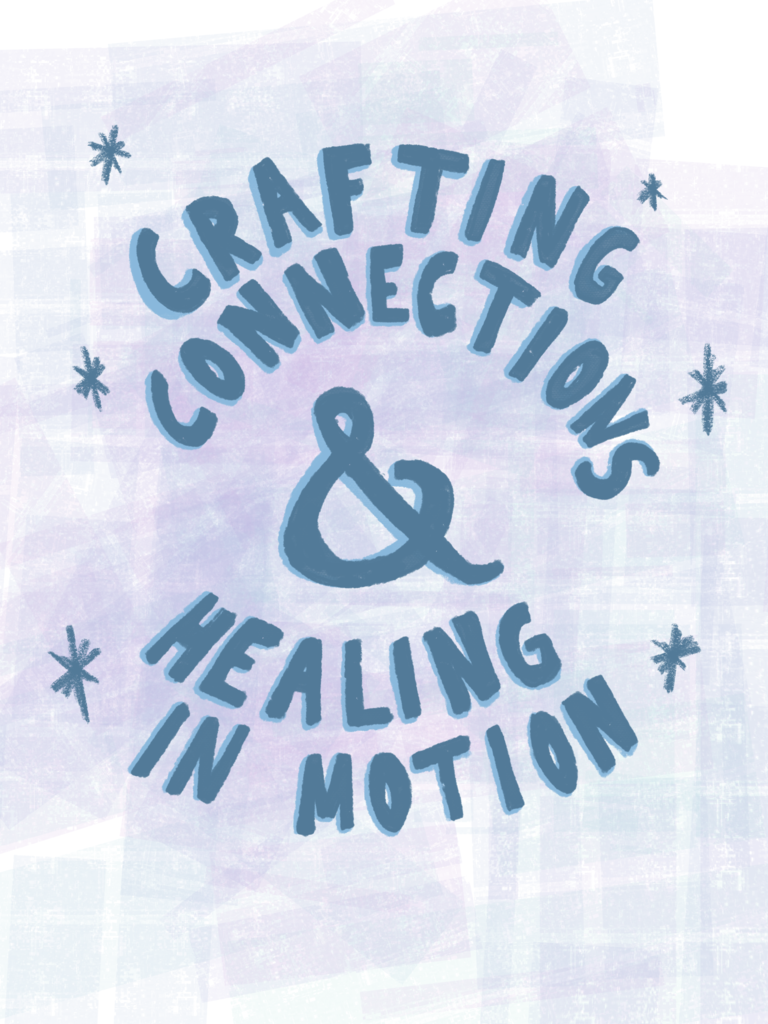
(Daily Bruin/Nitya Tak)
By Nina Young
June 4, 2020 at 5:08 p.m.
COVID-19 has assuredly demanded adaptation on the part of arts therapists, as they work to empower individuals who are newly isolated and especially vulnerable to the pandemic.
But there may be silver linings to the circumstances, said Esther Dreifuss-Kattan, art therapist and facilitator of the Healing Through Art workshop at the Simms/Mann-UCLA Center for Integrative Oncology. In isolation, she has made numerous collages from old medical texts and colorful cutouts of individuals. The figures that emerged on her canvas, she said, appeared humorous but at the same time, upset.
Perhaps this reflects the anxieties of society during a pandemic, she said, as creation is a way to settle down and see what is happening within the soul.
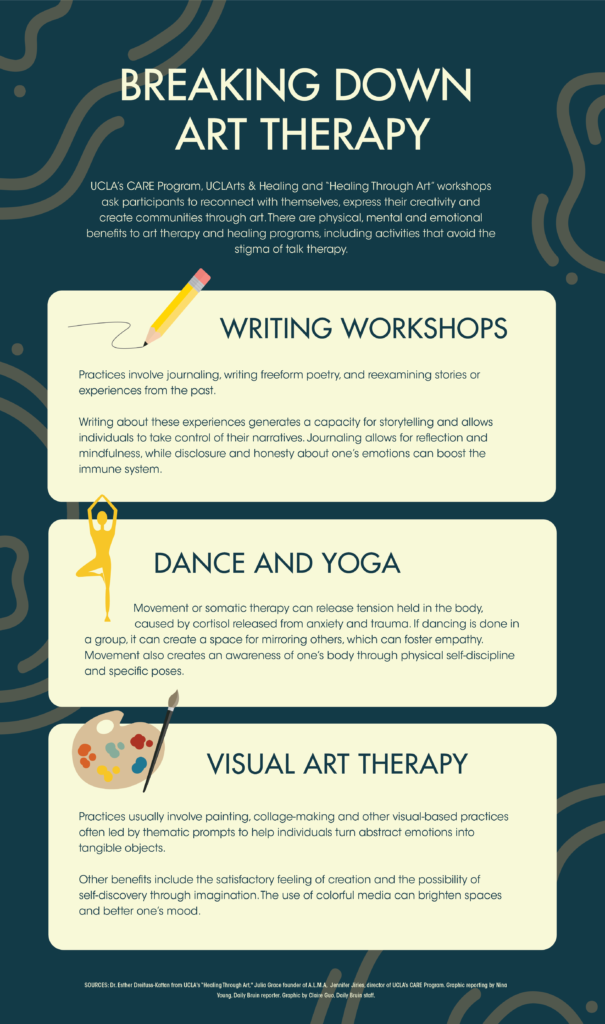
VISUAL ART: Imagination in Isolation
Like her patients, Dreifuss-Kattan said creating art is her coping mechanism, and she now brings this practice to past and present UCLA Health cancer patients virtually.
Facilitated by Dreifuss-Kattan since 2003, the Healing Through Art weekly oncology workshop has moved to Zoom meetings to comply with social distancing regulations. Dreifuss-Kattan said despite the distance restrictions of telehealth, the workshop – in which participants create their own art pieces – is still a supportive place of expression. Individuals need a place to share their story and form a community in these times of crisis, often with older patients providing advice to the newly diagnosed, Dreifuss-Kattan said.
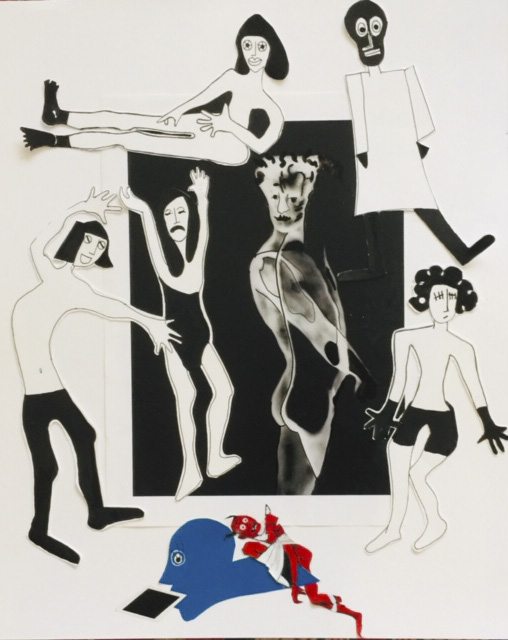
Feelings of satisfaction from creating art help manage the sometimes lonely experience of immunocompromised individuals in treatment, she said. Leading the Healing Through Art group means asking patients to explore their creativity with guidance from prompts, such as “freedom in isolation.” These prompts can encourage reflection on feelings of grief and frustration, emotions possibly exacerbated by the COVID-19 pandemic, she said.
“At the same time as (patients are experiencing the challenges of cancer), there is a whole other trauma: They’re all isolated and alone at home,” Dreifuss-Kattan said. “These are the most challenging issues.”
One workshop asked the participants to create a diptych – an artwork with two parallel panels – about contrasting feelings of denial and acceptance in the midst of a pandemic, said Madeline Elia, a Simms/Mann staff clinician and workshop assistant. With COVID-19 putting elective surgeries, such as mastectomies, and other oncology treatments on hold, she said art is a way for patients to process their increased sense of anxiety.
Despite its core focus on psychological healing, Dreifuss-Kattan said the now-virtual group setting still allows for moments of levity. Humor comes from the improvisation of art-making at home, Elia said, as she herself had to awkwardly collage together one of her pieces with staples instead of glue. While adapting to change, Elia said, art therapy allows individuals to process emotions kinetically when words are too complicated.
“Even if they can’t explain it but they can put it down on paper, together, the patient and the therapist can look at (the art piece) and make some interpretations to help the person or patient develop the language for what they’re experiencing,” Elia said.
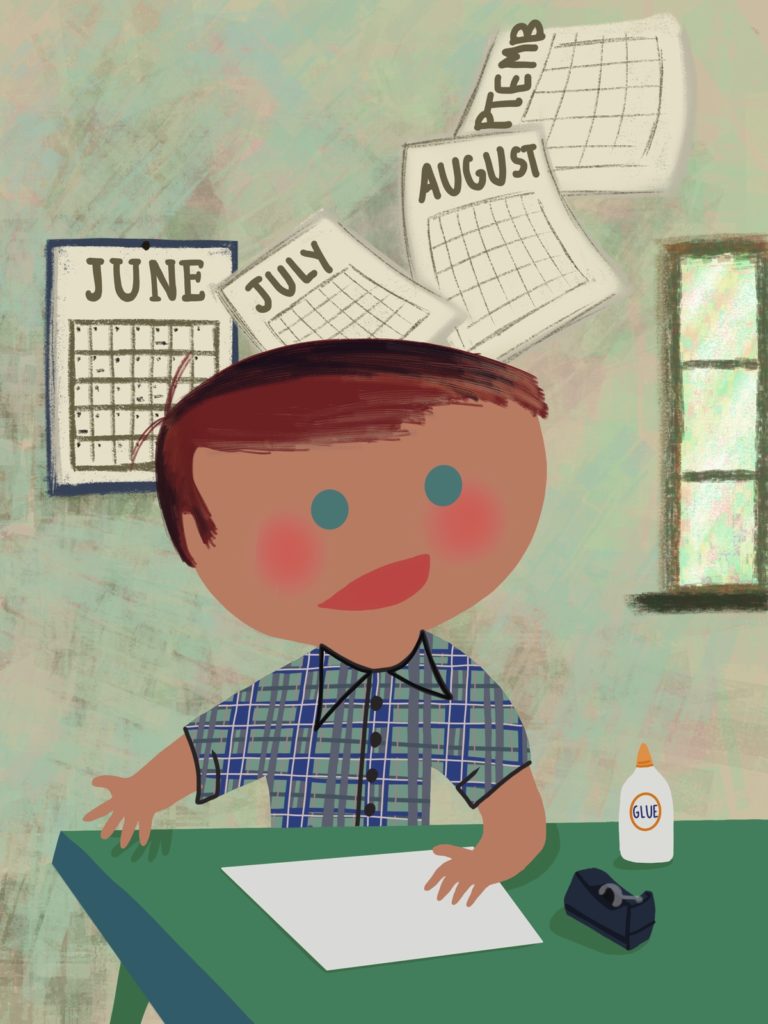
Finding HOPE
Mourning is an emotion that can be hard to put into words, said Ping Ho, the founder and director of UCLArts & Healing.
When COVID-19 started to affect daily life, Ho said she felt something indescribable she couldn’t immediately put her finger on.
“After a number of days I realized, this feels like grief to me – like grieving for a way of life that we had known that is no longer here,” Ho said. “There is so much that people might be grieving … the loss of a loved one, loss of a job, loss of a lifestyle, a home. It’s just a lot that people are holding right now.”
UCLArts & Healing is an organization that creates and promotes social-emotional arts curriculum with nonjudgmental language and reflection strategies that are based in sustainable public health practices. Ho said the experience of arts and media, such as dance, painting or music-making, can greatly strengthen one’s mental health. In bridging the gap between health care and the individual, social-emotional arts allow for a sense of neutrality, as the field contains less stigma and financial concerns in comparison to talk therapy, she said.
Since many of UCLArts & Healing’s in-person events and training programs have been canceled in an attempt to halt the spread of COVID-19, Ho said they went virtual with their Healing Online for People Everywhere Zoom series. The free programs include poetry workshops, Zumba classes and guided meditation sessions.
Along with Erica Curtis, a UCLArts & Healing core instructor, Ho guest-taught a virtual session in May based on their book, “The Innovative Parent: Raising Connected, Happy, Successful Kids through Art.” The goal of the session was to provide tools for parents with children living with stress or anxiety. When an individual is distressed, the brain has difficulty processing verbal information, and conversations can break down as it reverts to a self-protective mode, Curtis said. Additionally, children are often easily overwhelmed by abstract, complex emotions they can’t explain, she said, and art helps navigate that process.
“We’re more primed to be receptive to nonverbals, meaning … stimuli in the form of rhythm or music and movement,” Curtis said. “The arts come in as an alternative way to be able to access that child and help that child to access their own emotional experience.”
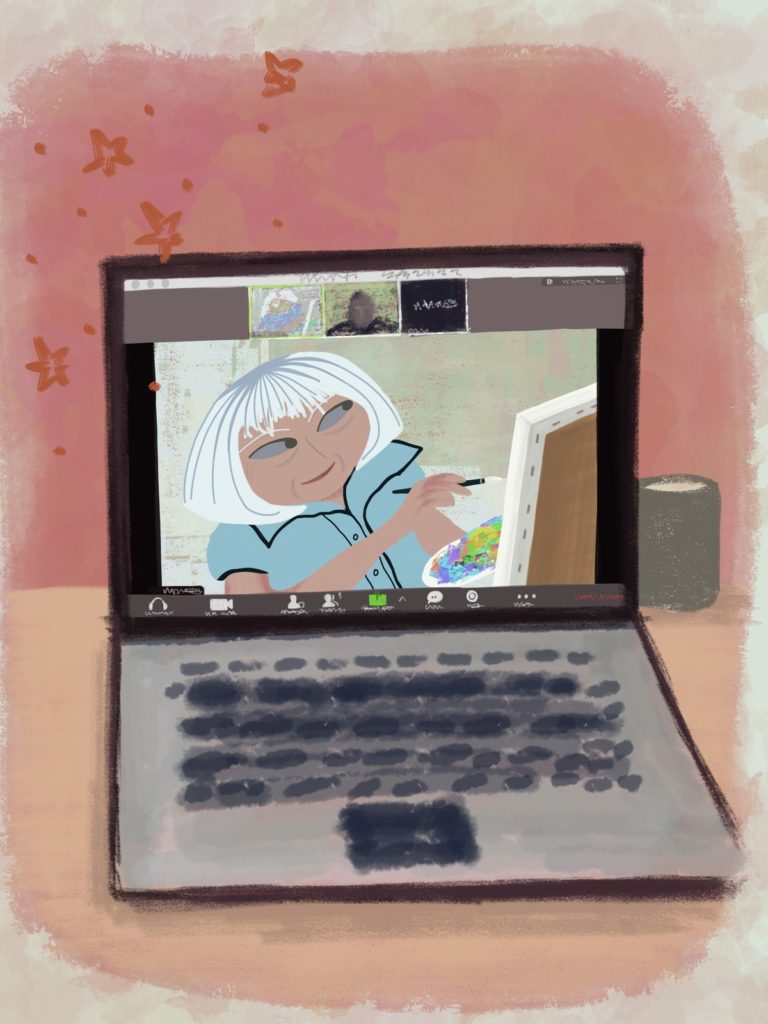
DANCE: With Your Elders
It hasn’t been easy to shift artistic, experiential workshops into a Zoom call, Curtis said, as the social-emotional arts preach hands-on engagement.
But the move to the virtual world hasn’t interrupted Ho’s own artistic practices, as she continues to take dance classes three times a week. Continuing this activity in quarantine acts as her personal mind-body healing process, Ho said. One of UCLArts & Healing’s partner organizations, Addressing Loneliness with Movement and Art, treats dance as a community-building act as well as a therapeutic act.
With fiscal help and curriculum training help from UCLArts & Healing, Julia Grace founded ALMA to address an underserved and neglected group: elderly populations in nursing homes. The organization began as a monthly program called PlantPals, through which volunteers brought flowers to nursing homes to reconnect elders with nature, Grace said. Over time, however, the nonprofit evolved to include more art forms such as group dance, painting and singing.
Grace said she saw the benefits of dance therapy when she was taking care of her paternal grandparents after her father’s passing 10 years ago. To process her own grief, she turned to an explorative, ritualistic movement practice called “JourneyDance,” and she later brought the dance to her grandparents’ nursing home. Dance is a form of nonverbal expression, she said, which crosses language barriers caused by diseases like dementia, allowing seniors to tangibly embody the present.
Furthermore, when the organization began including youths recovering from addiction as volunteers, Grace said her team noticed a mutually positive impact. Interacting with seniors led to an increase in the kids’ self-esteem and a decrease in ageism and substance cravings, Grace said – all while the seniors could reveal a lighthearted facet of their personalities through dance.
“Oftentimes, (dancing) is very silly … and getting to see our elders in such a playful state is really refreshing because we’re reminded that (joy) never dies, that never needs to leave,” Grace said. “The more we play, the younger at heart we feel, the healthier we are.”
The physiological basis for this connection comes from mirror neurons firing in the brain, Grace said, and these neurons generate a sense of empathy through reflection and togetherness. While dance is a more explicit form of physical mirroring, art practices always provide this opportunity for connection, Ho said.
“People need to feel seen and heard so that’s what the arts do,” Ho said. “The fact that someone responds means that you’ve been validated, you’ve been heard. That’s how we organically build empathy and relationships.”
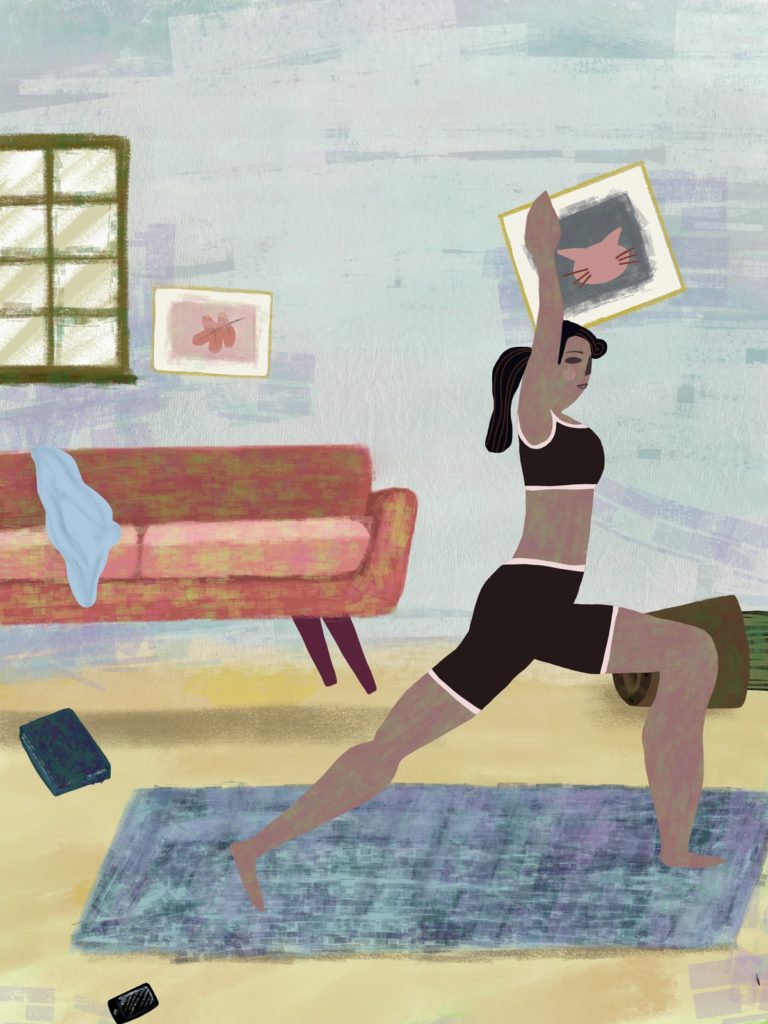
MOVEMENT: Control and Release
An important part of generating empathy and validation comes from providing a safe space for expression, said Jennifer Jiries, director of UCLA’s Campus Assault Resources and Education program.
Healing workshops, trauma-informed yoga and a journaling program, called A Write to Heal, are provided to survivors of sexual violence through CARE’s intake system. Because of COVID-19, CARE moved their yoga program online and hopes to roll out further art and meditation programs during the summer, Jiries said.
It is important to continue the trauma-informed yoga sessions virtually, she said, as they help survivors let go of tension held within the body. Zabie Yamasaki’s trauma-informed curriculum informs the yoga sessions, Jiries said, which guide survivors in regulating their bodies and trying to release stress and tension.
“Trauma deeply impacts the brain and … cortisol is released into the body, which stores itself in ways that are not helpful,” Jiries said. “Oftentimes with survivors, they’re disconnected from their bodies … trauma-informed yoga is about slowing down … your breathing, allowing your body time to heal.”
Jiries said the programs provided by CARE are not technically therapy sessions but rather workshops that promote healing and empowerment. It’s about the creation of a new narrative where the survivor is in control, she said, where individuals set their boundaries about how far they push their bodies, mentally or physically – like in yoga.
Accessing in-person services isn’t always viable for survivors of sexual assault or intimate partner violence, Jiries said, as attending workshops can be a big move in the extrication process from harmful situations. Jiries said the CARE team is trying to see the positives of social distancing, as survivors are empowered to seek out online resources from home and take smaller steps toward healing through virtual connections.
“What we are providing folks is a … safe and centered space (for survivors), where you get to set the tone of how you interact… but at the core, we’re encouraging you to reconnect with yourself, which trauma does the opposite of,” Jiries said.
FOSTERING CONNECTION
Prior to COVID-19, the spread out locations of UCLA Health cancer patients in Southern California meant many couldn’t make it to in-person Healing Through Art workshops, Elia said.
Now, anyone can join through Zoom.
In its most basic form, the arts are available to individuals stuck at home to experiment with privately, Dreifuss-Kattan said. Those experiencing stress can take out some paint brushes or turn on the music, and they should not feel the pressure of being an “artist,” she said. By closing one’s eyes and doodling with a few colors, then turning the page and continuing on, she said the individual can lose their fear of perfection and focus on expression.
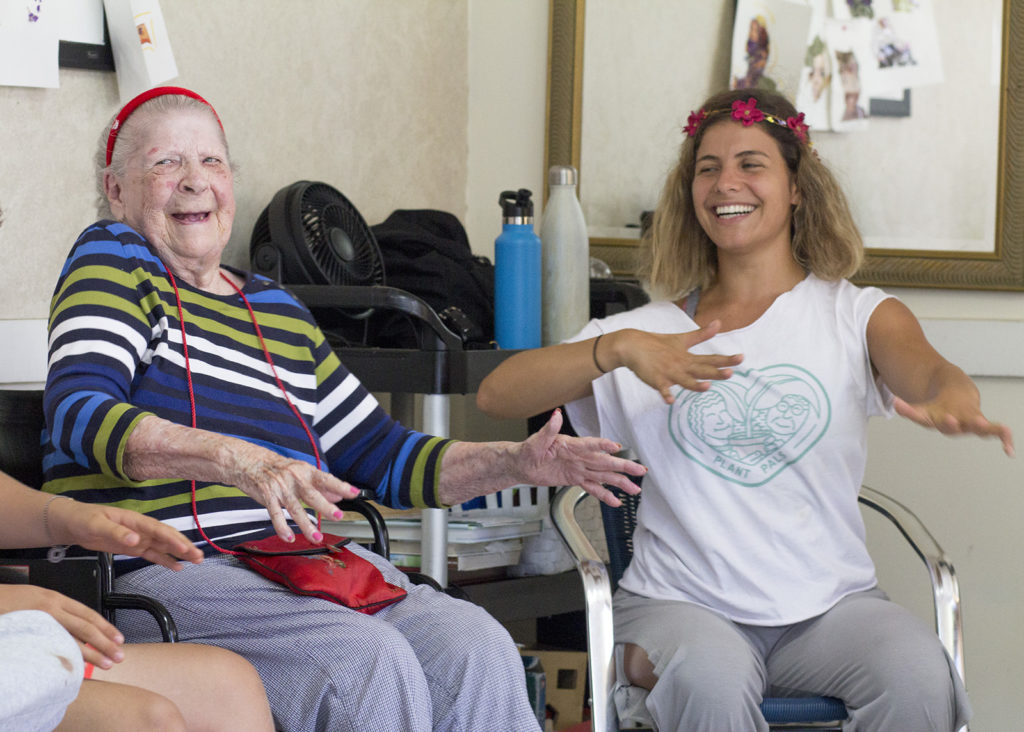
Grace said while she has not personally experienced tragedy because of COVID-19, some of her fellow colleagues working in nursing homes have been navigating the pandemic’s impacts with seniors who are more vulnerable to the coronavirus. She has been developing a virtual outreach curriculum since in-person workshops have been suspended, she said. Seniors’ abilities to adapt to new technology are often underestimated, Grace said, and by connecting individuals to elders this way, youth can access the vast wisdom of an older generation.
For workshop leaders like Curtis, Zoom usage has increased the reach of UCLArts & Healing to disseminate strategies that can help the younger demographics, she said. Sharing these strategies are necessary, Ho said, as the arts are capable of enhancing positive emotions rapidly and are uniquely powerful in forming social connections.
“When you think about problems like trauma and loneliness, it’s all rooted into the absence of connection,” Ho said. “It’s time to broaden public access to these tools by putting (healing arts techniques) online, and what COVID-19 did was make everything faster. As a team, we decided we wanted to do something to help support the resilience of our global community.”
